A few of us here at Ausdroid are into our fitness. Chris heads to the gym when/if he can find the time, Dan loves to run, row and ride and Phil flies down dangerous slopes at terrifying speeds on his mountain bike. Me, I lift a few weights and spend a minimal amount of time on the cross trainer. The average fitband these days is useless to me. I couldn’t care less about how many steps I take, how many glasses of water I drink a day or how many floors I climb. Body composition is something I do care about so when the new TomTom Touch was announced my ears perked up. This is something I could really put to the test. Let’s get into it.
ProsAccurate heart rate |
ConsInaccurate body composition |
Hardware
The band is a decent band and while is doesn’t have a buckle, the loop the band goes through combined with the press stud-type clasp makes for a solid band that is not going to fall off. It felt comfortable on the wrist, with TomTom telling me where to position it for best use — just proximal to the ulnar prominence (bump on back of wrist) for those wondering.
The display is fairly small considering the sizes the fitbands it is coming up against have. It is a black and white LCD touch screen although only touch for scrolling through the options. Selection is made with the silver hard (? capacitive) button which has very little in the way of feedback and it is very difficult to determine if the press on it has been registered.
I am in a unique position to be able to accurately test the functions of the TomTom and compare them to gold standards. Firstly I compared the heart rate from the TomTom Touch to a basic pulse oximieter (finger pulse rate and oxygen saturation measurer) and found it was very accurate once both had settled in. I then took it a step further and performed an ECG on myself at the same time as measuring the heart rate using the TomTom Touch. The TomTom was extremely accurate compared to the ECG and was within a beat or two. If you are looing for an accurate heart rate monitor this is one for consideration.
Next I had to test out the body composition. Having been a bodybuilder back in my youth this is something that interests me greatly. I had been having semi-regular dexa (dual-energy X-ray absorptiometry) scans to track my training and diet so when I slapped this watch on and used it I couldn’t wait to test out the body composition function. I followed all the correct steps and I must say it was very difficult to get it to work – the finger touching the metal button on the watch (to create the loop to measure the electrical impedance) has to be perfectly horizontal plus a few other things. Eventually it gave a reading. That afternoon I had a dexa scan. If you are wondering, a dexa scan is generally considered to be the gold standard in body fat measurement and everything else has varying measures of success. The PT at the gym using calipers to measure skinfolds is normally the lowest accuracy for many reasons. Bioelectrical impedance that the TomTom Touch uses sits somewhere in the middle.
The measurement the TomTom Touch gave me was TWICE what the dexa did. I checked it again the next day and the Touch gave me the same body fat percentage again. Waste. Of. Time. You could say that it was consistent in its reading at least, but further research led me to the realisation that bioelectrical impedance is pretty much a waste of time for measuring body fat. The error rate is so high that for example, someone could lose 4% bodyfat and the measurement may say you had gained 4%. For this reason it is not recommended to be used as a comparison tool from one measurement to the next but may “indicate the direction of changes in FFM (fat free mass), but are unlikely to quantify their magnitude with accuracy.” In other words it may indicate a direction of fat loss or gain over a large period of time but it cannot determine the magnitude of the the fat loss or gain.
There is no GPS functionality on the TomTom Touch which is surprising given that is where they started. I could not even see a function where the app or the watch used the GPS function on your phone to track runs etc.
While you would expect a fitness watch to include a truckload of sensors etc but either the TomTom Touch does NOT include an accelerometer or they have just made it not possible to turn the watch on with the lift wrist gesture. Personally I do not want to have to touch the silver button each and every time I wanted to see the time. A friend actually has the gesture to turn display on turned off on her FitBit Charge 2 so obviously this would not affect everyone but the option is not there either way and is a big miss in my opinion.
I am going to include battery life here although maybe it should be in its own section. Even though the display is a basic black and white LCD with very little actually displaying on it the battery life was very average. While its main competitor, the FitBit Charge 2 comfortably lasted over 4 days the TomTom Touch had to be charged every single day. Not a huge issue but disappointing — my Huawei Watch only needs charging every second day. A fitband should have much better battery life. This is with HR on constantly, just as I did with the FitBit Charge 2. I could not find anywhere to turn the heart rate off within their app. The good news regarding the charging though is that it uses microUSB to charge it, not a propietary charging solution. The watchface pops out and the plug slots straight in. It is a very elegant and easy to use solution that they have done very well with.
Step measurement seemed to be very accurate too if that is something you look for in a fitband — many do. I compared it to the FitBit Charge 2 and my Android Wear watches over several days and each time they were close.
Software
TomTom offer an Android app as well as a Windows program. Unfortunately the PC program is required to update the software on the watch. This cannot be done with the Android app which is a big oversight. The app on the phone is very minimal when compared with the apps that Garmin, Samsung and FitBit offer. It shows the basics and albeit not very well. Everything is hidden away. They really need to go and look at the Samsung app to see a well designed app that is easy to use while also displaying a heap of information. The best way to view your progress is use the TomTom MySports Windows program to connect your device to your PC which then syncs the content on your device to the cloud and you can access it via the web browser at the TomTom MySports website. Welcome to 1990. You can also sync it to the app on your phone but that seems to take a very long time and failed for me several times — possibly due to the janky Bluetooth connection.
The watch connects to your phone via Bluetooth and for the first few days I thought it wasn’t working as it took so long to connect and I had to re-pair it each time. After a few days I just left it and it eventually connected. TomTom even say themselves in their instructions that sometimes you have ot re-pair it — not good. Like I said though, eventually it did connect if I just left it for around 5-10 minutes.
TomTom advertise the Touch as being able to perform notifications from your phone. It can do phone calls and text messages. It gives you a notification of the presence of one but does not display who the call or text is from and does not give you the content of the text message. It cannot do notifications for any other app other than these two which is a big requirement for me to give it the two thumbs up.
Conclusion
I was really looking forward to testing out the TomTom Touch. It promised so much. Unfortunately in the end it delivered so little. The promised body composition, while the best you could expect in a watch, turned out to be nothing more than a gimmick. Bioelectrical impedance is not an accurate method for determining body composition so if you want that from a watch you are going to be disappointed. The inablity of it to turn the display on with a gesture defies modern technology that is in every other watch/fitband I have tested. Imagine performing some form of exercise and watch to quickly check your heart rate but you have to take the time to turn the watch on yourself using the button — far from ideal for me but some may disagree. The app is minimal at best and the fact you need a desktop PC to update the watch software is a fail too. It will only do phone calls and text message notifications, and then not very well. The battery life was worst in class as well but did last a day.
Sometimes when we do reviews we look for things wrong with devices and forget about the things they do well. The TomTom Touch does some things well. It can measure heart rate extremely accurately when compared to an ECG which is a big thing, especially if you are using it as an exercise aid. The measuring of steps was very accurate as well.
Would I recommend it for anyone out there? Some people don’t care about the negatives I found with the device and if that is you and all you want is a fitband that accurately measures steps and heart rate then it is good enough for you. At a RRP of $219 it is cheaper than any other that I consider its competition, the Samsung Gear Fit 2 and the FitBit Charge 2. If you need more than HR and steps then I would say check out one of the other two watches. The TomTom Touch can be purchased from their website as well as your usual fitband bricks and mortar stores.

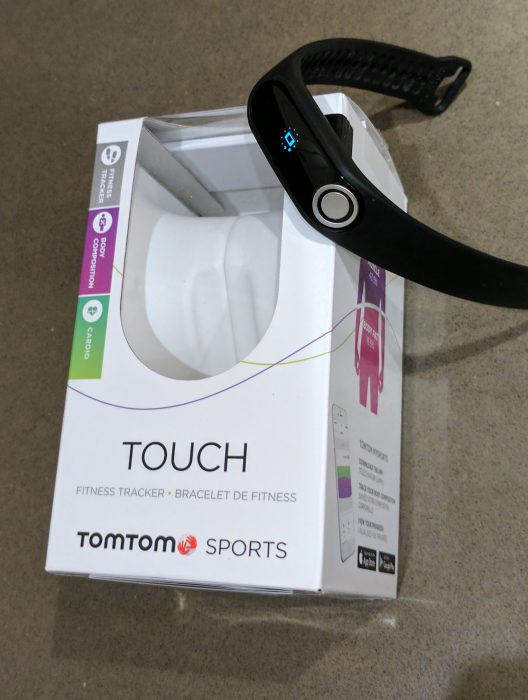
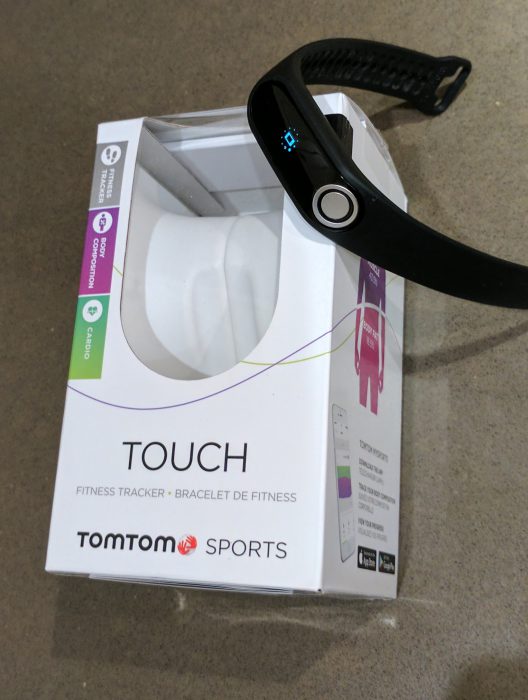
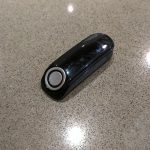
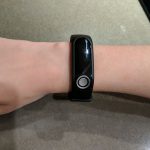
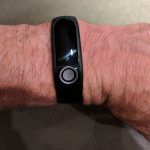
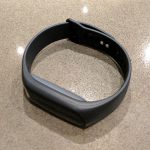
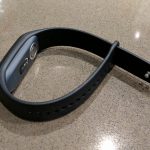
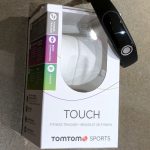
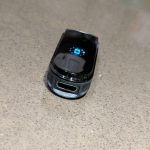
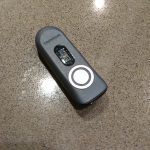
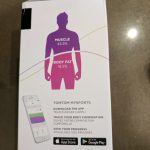
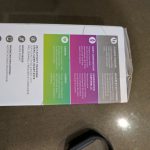

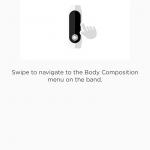
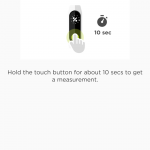
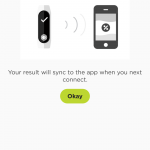
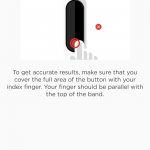
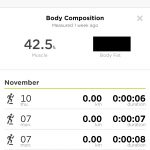
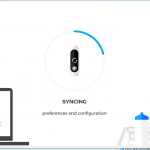
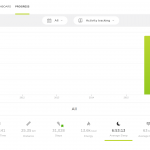
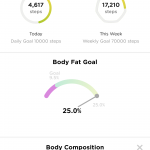
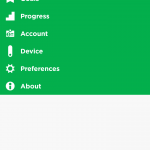
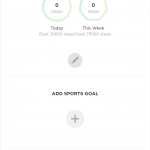

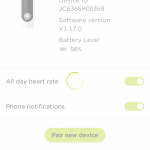
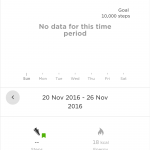
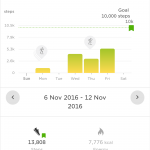
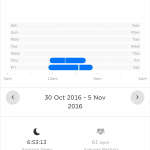
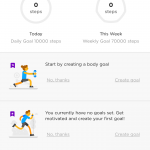



I bought one of these on the weekend because I wanted to track my body composition. I don’t need it to be super accurate. I just need to know roughly the changes in muscle mass and body fat.
I’m on day four with about 15% battery left which is much better than a smartwatch. It was an impulse buy which is strange for me not to review similar products first. I find it’s comfortable to wear but initially fiddly to get the prongs into the rubber holes. Once you get the technique it’s easy enough and holds on strong.
It’s just weird to see the name TomTom on a fitness band >.< hehe